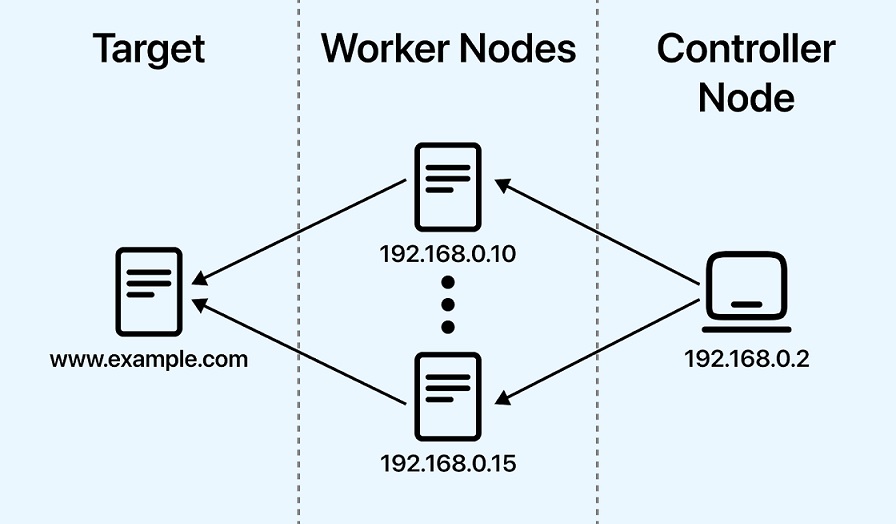Are you struggling with the testing strategies due to a distributed team setup? A remote test lab might be the best solution for you to ensure collaborative, seamless, and effective testing processes. This is because testers and developers can access all the configurations of a remote test lab from anywhere in the world without any limitations.
This article will guide the developers through the comprehensive process of setting up a remote test lab. During our discussion, we will also highlight the key considerations, tools, and best practices that will help elevate the potential of this process. Finally, we will complete our discussion by looking at some of the common challenges of this process and their best solutions.
Reasons to Implement A Remote Test Lab
As we all mentioned earlier, a remote test lab is a testing setup that runs through one or multiple remote servers. Due to these parameters, the developers and testers can access this lab from anywhere in the world at any given instance. Let us also go through some of the other crucial benefits of a remote test lab to understand its importance in the modern generation:
- The team members of your company can access the test environment from anywhere in the world without any geographical limitations.
- With a remote test lab, app-developing companies can reduce the need for physical infrastructure and related maintenance costs.
- A remote test lab is easily scalable, which can help the testers accommodate the growing teams and the evolving requirements of the project that is currently being worked on.
- Using a remote test lab, the company’s developers can improve the collaboration and team members. They can achieve this process using various shared resources and tools.
Planning The Remote Test Lab
Before implementing a remote test lab, the app developers and testers must perform a comprehensive planning phase where they will consider all the prerequisites for this process. To shed mood light on this segment, we have mentioned some of the most important factors of this list:
Defining The Requirements
Before the testers can move on to the setup process, they must understand the following requirements that are associated with the remote test lab:
- It is important to understand the types of testing, including functional, performance, and security testing, that need to be supported by the lab.
- Next, the testers must identify the number of users and the roles involved with the testing process. The most important roles include testers, developers, and test managers.
- After this, the testers must elaborately list the hardware and software resources required to be integrated with the test lab. This list usually comprises the target audience’s most commonly used hardware and software configurations.
- Finally, the testers have to ensure compatibility of the remote test lab with the existing tools and workflows within the app developing company.
Budget Considerations
Creating a budget is a crucial process of the test initiation process. This is because by considering this budget, the app developers and testers can ensure that they remain economical while expanding their test reach:
- The first thing that the testers must consider is to analyse the cost of the initial setup and the ongoing maintenance processes.
- Next, the testers must consider the licensing fees associated with all the tools and platforms they will integrate with this process.
- If you opt for any cloud-based solutions, you must consider their expenses.
- Finally, you need to consider the expenses required to set up elaborate security measures to protect the data and infrastructure associated with the software.
Selecting The Right Tool
Another important aspect is choosing the right tools to ensure the success of a remote testing lab. Essential automation testing tools must include test management tools, communication platforms and more.
Setting Up The Remote Testing Infrastructure
It is a very simple process for the application developing companies to set up a remote testing infrastructure for the distributed teams. To shed more light on this segment, we have separated the entire segment into multiple steps:
Hardware Requirements
The hardware requirements for setting up a remote test lab will depend on the scope and scale of your testing projects. From a typical point of view, you will require the following inclusions within your in-house hardware:
- The servers will host virtual machines, databases, and other services crucial for running the test lab.
- Using network devices like routers, switches, and firewalls, you can perform network management and allow your in-house devices to connect with the remote servers to execute the test instances.
- Finally, you will require sufficient storage capacity to store the test data and logos, so create a data backup if you lose any data or they get corrupted during the test execution process.
Software Requirements
While using a remote testing lab, the testers will require access to various software to execute multiple tasks and actions. To shed more light on this segment, we have mentioned some other most important ones below:
- The first thing that you will require is access to multiple operating system configurations. This is part of executing automated cross-browser testing using a remote testing lab.
- Next, you will require various virtualisation software to create virtual machines. Some of the most popular tools to help you create a virtual machine over a remote test lab include VMware or Hyper-V.
- Finally, the testers must set up efficient test management software to manage the test cases, report the test outcomes, and track the test results to implement the required debugging steps.
Network Considerations
The network configuration will ensure smooth operation and a clear connection between the in-house testing machines and the remote test lab. While setting up the network access, the tests must consider the following parameters:
- It is important to have access to a virtual private network to secure remote access to the test lab. It will also ensure that any unauthorised personality cannot access the test data or hamper the test results.
- It is also important for the application testers to ensure sufficient bandwidth allocation. This allocation will ensure multiple users can access the devices and configurations in the remote test lab without any network hiccups.
- Finally, the testers must have access to elaborate network monitoring tools. These tools will allow the testers to monitor and manage the network performance while ensuring the cloud security of these devices.
Choosing The Right Tool
The proper test management tool will help the tests organize and manage the test cases, plans, and execution. Some of the most popular test management tools in the present market include Jira and TestRail.
Testers must remember that automation is the most important factor in implementing efficient test cases. Some of the most popularly used automation testing tools in the present market include Selenium, Appium, and Jenkins. Since all these tools serve different automation requirements, you must conduct thorough research and choose the correct tool per your requirements.
Finally, the right communication and collaboration tool will help you properly synchronise with distributed teams. App-developing companies can consider using tools like Slack, Confluence, and Zoom to achieve this goal.
Best Practices for Using A Remote Test Lab
Now, let us go through some of the best practices that can help application developers and testers utilise the full potential of a remote testing lab:
- The testers need to document all the test cases and their results. This documentation will help the testers create reference points for all the bugs and errors detected in the application infrastructure using a remote test lab. It will also help them release frequent application updates.
- We advise the testers to regularly update the test environment. In this process, the testers must update the software and maintain the hardware by implementing upgrades per the requirements.
- The testers must integrate continuous integration and deployment practices with a remote testing lab to improve efficiency. This process will also help include automated testing and continuous feedback within the testing flow.
Challenges of Using A Remote Test Lab And Its Solutions
Now, let us go through some of the major challenges that the app developing companies will face while using a remote test lab for performing software releases:
- It can be a major challenge to coordinate across different time zones. As a solution, the app-developing companies can use tools like World Time Buddy to schedule meetings conveniently for all team members. Adopting an overlap when all team members are available is also beneficial.
- The application testers will face certain challenges while ensuring clear and effective communications. The best solution for this problem is regularly scheduling meetings, creating detailed written communications, and using collaboration tools.
- Maintaining consistent testing environments while using remote servers to execute the test cases can be massively challenging. The testers can use containerisation processes like a Docker file to create consistent environments and automate the setup process.
- Integrating real devices with a remote server can be a challenging process. The developers can integrate cloud-based platforms like LambdaTest. It is an AI-powered test execution platform that lets you run manual and automated tests at scale with over 3000+ real devices, browsers and OS combinations.
The Final Verdict
Based on all the steps we analysed in this article, we can easily conclude that setting up a remote testing lab for distributed testing teams is a complex but rewarding process. By carefully planning the infrastructure, using the right tools, and implementing robust security measures, the testers can create a testing environment that supports efficient, collaborative, high-quality software releases.
Also, by adopting all the best practices we analysed in this article, the testers can enhance the testing process while ensuring the distributed teams can deliver top-quality software products to their end users. Finally, we would like to say that staying adaptable and continuously improving the remote testing lab setup will be crucial in sustaining success and achieving the testing goals.
Read More: CUIMS: Guide On Registration, Login, Features, Benefits And More



